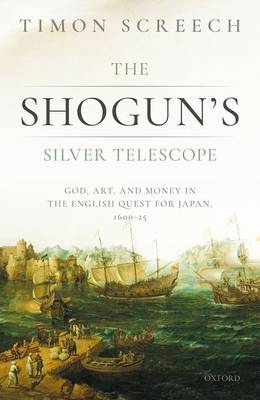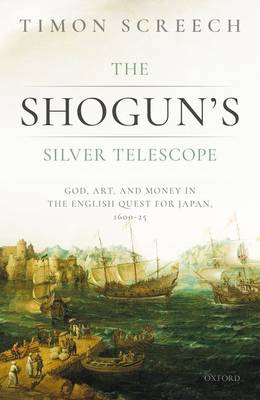
Je cadeautjes zeker op tijd in huis hebben voor de feestdagen? Kom langs in onze winkels en vind het perfecte geschenk!
- Afhalen na 1 uur in een winkel met voorraad
- Gratis thuislevering in België vanaf € 30
- Ruim aanbod met 7 miljoen producten
Je cadeautjes zeker op tijd in huis hebben voor de feestdagen? Kom langs in onze winkels en vind het perfecte geschenk!
- Afhalen na 1 uur in een winkel met voorraad
- Gratis thuislevering in België vanaf € 30
- Ruim aanbod met 7 miljoen producten
Zoeken
The Shogun's Silver Telescope
God, Art, and Money in the English Quest for Japan, 1600-1625
Timon Screech
Hardcover | Engels
€ 77,45
+ 154 punten
Omschrijving
The East India Company, founded in London in 1600, was a spice trading organisation. But its governors soon began to think bigger. After a decade, they started to plan voyages to more fabulous places, notably India and Japan. India had cotton cloth, while Japan had silver, and crucially was cold in winter. England's main export was woollen cloth (which will not sell in hot places), so the Company envisaged adding to its spice-runs, sailings back and forth to Japan, exchanging wool for silver. This could be done quickly, over the top of Russia, as maps suggested. Maps also made Japan twenty times too large, the size of India in fact.
Knowing the Spanish and Portuguese had preceded them, the Company prepared a special present for its first extended sailing. In the end this missed India, but got to Japan, in 1613. The Shogun was presented with a silver telescope in the name of King James. It was the first telescope ever to leave Europe and the first made as a presentation item. Before this voyage had even returned, the Company dispatched another, under the New Year's Gift with an equally stunning cargo: almost 100 oil paintings. Not yet able to go over Russia, these would be given and sold to the India and the Japanese courts.
This book looks at formation of the Company, but mostly asks the meaning of these two extraordinary cargoes. What were they supposed to mean, and what effect did they have on quizzical Asian rulers?
Knowing the Spanish and Portuguese had preceded them, the Company prepared a special present for its first extended sailing. In the end this missed India, but got to Japan, in 1613. The Shogun was presented with a silver telescope in the name of King James. It was the first telescope ever to leave Europe and the first made as a presentation item. Before this voyage had even returned, the Company dispatched another, under the New Year's Gift with an equally stunning cargo: almost 100 oil paintings. Not yet able to go over Russia, these would be given and sold to the India and the Japanese courts.
This book looks at formation of the Company, but mostly asks the meaning of these two extraordinary cargoes. What were they supposed to mean, and what effect did they have on quizzical Asian rulers?
Specificaties
Betrokkenen
- Auteur(s):
- Uitgeverij:
Inhoud
- Aantal bladzijden:
- 326
- Taal:
- Engels
Eigenschappen
- Productcode (EAN):
- 9780198832034
- Verschijningsdatum:
- 14/12/2020
- Uitvoering:
- Hardcover
- Formaat:
- Genaaid
- Afmetingen:
- 155 mm x 231 mm
- Gewicht:
- 680 g

Alleen bij Standaard Boekhandel
+ 154 punten op je klantenkaart van Standaard Boekhandel
Beoordelingen
We publiceren alleen reviews die voldoen aan de voorwaarden voor reviews. Bekijk onze voorwaarden voor reviews.









